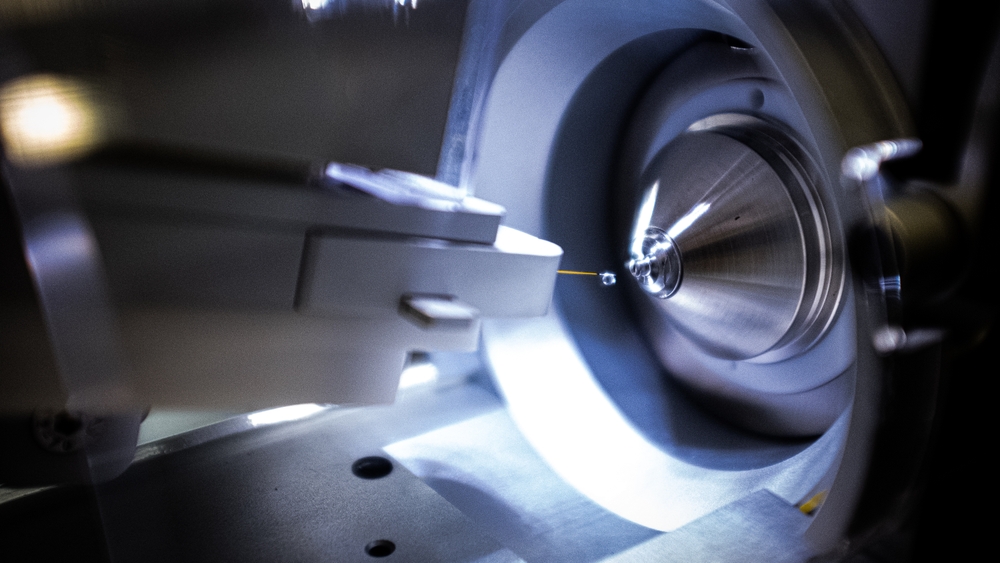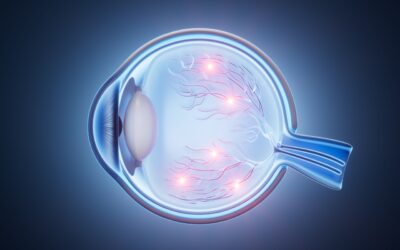Introduction to Advanced Therapy Drugs
Inherited genetic diseases afflict people around the world. These mutations affect individuals’ biological functions, metabolic processes or the production of specific essential proteins, leading to hereditary diseases, including hereditary blood diseases (sickle cell anemia), hereditary retinal diseases (retinitis pigmentosa), and hereditary muscle diseases (Duke’s malignant muscular dystrophy), etc. Advanced therapy drugs include therapeutic interventions designed to repair or modify specific genes, providing cells with new instructions to produce functional proteins or intervene against genetic defects in diseases. These types of drugs will help treat a wide range of genetic diseases and certain types of cancer to address the underlying problem of genetic abnormalities.
Currently, common genetic drugs mainly include DNA and RNA. DNA is supposed to be a gene fragment or sequence with therapeutic effects. These DNAs are delivered into cells to replace or supplement defective or missing gene function. RNA includes messenger RNA (mRNA), small interfering RNA (siRNA), antisense oligonucleotides (ASO), etc. These RNA molecules modify or inhibit harmful gene expression or restore specific gene function. However, the process from entering the human body to reaching the target cells is full of challenges.
Since the gene sequence is unstable in the gastrointestinal tract, intravenous or subcutaneous injection is often used. However, because the human body contains abundant nucleic acid enzymes, most genetic sequences entering the circulation system will be broken down. Because the gene sequence is a large molecule and contains a phosphate group that is negatively charged, and the cell membrane is also negatively charged, when a small amount of remaining genetic medicine reaches the outside of the target cell, the two negative charges meet, and the gene will be rejected and escape the cells. Therefore, specific gene-drug delivery methods should be developed to prevent their degradation in the body and improve the cell membrane penetration efficiency so that DNA or RNA sequences are smoothly delivered into the cells and exert their efficacy.
Delivery Methods
The current standard gene delivery methods are mainly divided into two categories: viral vector delivery and non-viral vector delivery. Viral vector delivery primarily includes adeno-associated virus (AAV) and lentivirus. This type of viral vector simulates the virus infection process of host cells and easily passes through cell barriers, often showing high delivery efficiency. However, viral vector delivery also has drawbacks. First, the packaging capacity is limited. For example, the maximum packaging capacity of AAV is 4.7 kb, so longer gene sequences cannot be delivered. In addition, viral vectors may cause severe immune reactions, including cellular and humoral immunity, which causes risks in clinical applications.
In contrast, non-viral vectors have considerable advantages in terms of safety and drug loading capacity. Currently, the most used non-viral vectors mainly include liposomes, polymers, nanoparticles, exosomes, etc. Among them, liposomes are a kind of microvesicle formed by amphipathic molecules, with diameters ranging from 100 nm to 1 um, mainly composed of phospholipids, cholesterol, PEG lipids and cationic lipids. Its phospholipid bilayer structure is like a cell membrane, which enables it to enter cells smoothly through endocytosis. In addition, the surface of liposomes could also be modified with PEG or special antibodies so that they could target specific tissues or cells while escaping immune clearance from the body. Cationic liposomes add positively charged quaternary ammonium salt lipid components, enabling them to better combine with negatively charged nucleic acid drugs and maintain the stability of the delivery system. Therefore, liposomes are a common non-viral vector delivery method for gene drugs.
However, there are also some problems with traditional liposomes: first, although the large diameter span of liposomes ensures sufficient drug loading capacity, it hinders the process of liposomes penetrating the vascular endothelial space (100 – 200 nm). In addition, liposomes enter cells through the endocytosis pathway and form an endosome-lysosome system. Traditional liposomes fail to escape from lysosomes in time, resulting in most genetic drugs being degraded by lysosomes and unable to exert their efficacy. Since the shortcomings of traditional liposomes in delivering genetic drugs, lipid nanoparticles (LNP) were developed and have become an important delivery method particularly suitable for delivering nucleic acids to target cells and tissues.
Introduction to LNP Carrier System
Lipid nanoparticles (LNP) are nanoparticles composed of lipid substances. Their diameter is generally between 10 – 200 nm – relatively smaller than traditional liposomes. Therefore, they more easily penetrate endothelial space. In addition, LNPs are usually composed of cationic/ionizable lipids, auxiliary phospholipids, polyethylene glycol (PEG) lipids, and cholesterol. Auxiliary phospholipids and cholesterol can increase the stability of LNP; PEG lipids have the advantage of increasing the circulation time of LNP in the body and reducing immune responses.
These ingredients share similar functions with traditional liposomes. The main difference between the two lies in cationic/ionizable lipids, the central area of LNP patent protection. As mentioned before, cationic liposomes effectively maintain the combination with nucleic acid drugs and improve the delivery efficiency of nucleic acid drugs. However, cationic liposomes are also prone to non-specific binding with negatively charged plasma proteins and blood cells in the systemic circulation, causing liposome aggregation and thus being quickly cleared out of the body (the half-life of cationic liposomes in the body is only 15 minutes).
To solve this problem, an ionizable lipid has been designed. Ionizable and cationic lipids are very similar in structure, taking the common cationic lipid DOTAP and the ionizable lipid DODAP as an example; the main difference is that DOTAP is a quaternary ammonium salt with a positive charge, while DODAP is a tertiary amine structure. The tertiary amine structure keeps the pKa of the lipid between six and seven. The ionizable lipid is positively charged when the pH is less than the pKa (under acidic conditions). Ionizable lipids exhibit a neutral charge when the pH is close to the pKa (under neutral conditions). This structure cleverly solves the problems encountered by cationic lipids: since the pH in blood circulation is close to neutral, ionizable lipids are also neutral, and their non-specific binding to plasma proteins or blood cells is significantly reduced, extending the half-life. In addition, when the ionizable lipid LNP is taken up by cells into lysosomes, the lipids are ionized and positively charged in the lysosomal pH 5-6 environment. The positively charged lipids easily interact with endosomes and lysosomes. Body membrane fusion allows liposomes to escape into the cytoplasm, dissociate and release nucleic acids, thereby exerting drug efficacy. In summary, efficient gene delivery is supposed to be achieved by designing LNP carrier systems, which mainly involve optimizing lipid composition, particle size, surface charge, and stability.
LCMS Bioanalytical Strategy for LNP-Encapsulated Genetic Drugs
LNP-encapsulated gene drugs are divided into the LNP shell and the gene-drug itself. The LNP shell is mainly composed of lipid components (cationic/ionizable lipids account for about 30 – 50%, PEG lipids account for about 2%, cholesterol accounts for about 20 – 50%, and auxiliary phospholipids account for about 10 – 20%). Genetic drugs are mainly gene sequence fragments (DNA, ASO, siRNA, miRNA, etc.). The latest regulations of NMPA and U.S. regulatory authorities stipulate that in addition to the need to conduct toxicological and pharmacokinetic studies on the active ingredients (gene sequences), the drug-carrying system new lipid components that have not been used in marketed drugs, such as cationic/ionizable lipids in key areas of patent protection in LNP, PEG lipids with special modifications, etc., also need to undergo relevant safety and druggability evaluations in the IND application stage for drugs with drug-carrying systems such as LNP.
LCMS bioanalysis of LNP lipids was as described previously, focusing on cationic/ionizable lipids and PEG lipids. Due to structural differences between them, the molecular weight of cationic lipids/ionizable lipids is generally within 1 kDa, while the molecular weight of PEG lipids is up to 2~5 kDa after carrying modification groups, which brings about a significant difference in chromatographic retention and mass spectrometry response.
The two pre-treatment methods (selection of extraction solvent, determination of dilution factor) fail to be effectively unified considering the different responses caused by higher contents of cationic lipids/ionizable lipids in LNP than PEG lipids. In addition, since there are many interference peaks around the peak position of PEG lipid, a long liquid phase separation gradient is often required for effective separation, which fails to guarantee high analysis efficiency. Therefore, it is advisable to set up a separate PEG lipid detection during the biological analysis method. At the same time, cationic/ionizable lipids and PEG lipids also have common difficulties in the method development process of lipid components. For example, lipid components generally have poor solubility in water, are unstable in biological matrices, and undergo protein binding. This leads to over-limit recovery, high interference and residue of PEG lipids, changes in the stability of lipids in real sample plasma, and difficulty in internal standards selection.
A Final Word
LNPs play a critical role in advanced therapy drug delivery and their bioanalysis using LCMS technology. Advanced therapies aim to treat genetic diseases by delivering DNA or RNA to correct defective genes or inhibit harmful gene expression, but challenges like degradation in the body and poor membrane penetration persist. To overcome these, LNPs, composed of ionizable lipids, phospholipids, cholesterol, and PEG lipids, offer advantages over traditional liposomes, including better stability, reduced immune responses, and efficient delivery through pH-dependent charge modulation. Regulatory authorities mandate rigorous safety and pharmacokinetic evaluations of both the gene sequences and novel lipid components. However, analytical challenges like poor solubility, instability in biological matrices, and interference peaks necessitate specialized LCMS strategies, including separate detection of PEG lipids and tailored methods for lipid analysis. This emphasizes LNPs’ potential in advancing these therapies while addressing the complexities of their bioanalysis.
As a global company with operations across Asia, Europe, and North America, WuXi AppTec provides a broad portfolio of R&D and manufacturing services that enable the global pharmaceutical and life sciences industry to advance discoveries and deliver groundbreaking treatments to patients. Through its unique business models, WuXi AppTec’s integrated, end-to-end services include chemistry drug CRDMO (Contract Research, Development and Manufacturing Organization), biology discovery, preclinical testing and clinical research services, helping customers improve the productivity of advancing healthcare products through cost-effective and efficient solutions. WuXi AppTec received an AA ESG rating from MSCI for the fourth consecutive year in 2024 and its open-access platform is enabling around 6,000 customers from over 30 countries to improve the health of those in need – and to realize the vision that “every drug can be made and every disease can be treated.”


